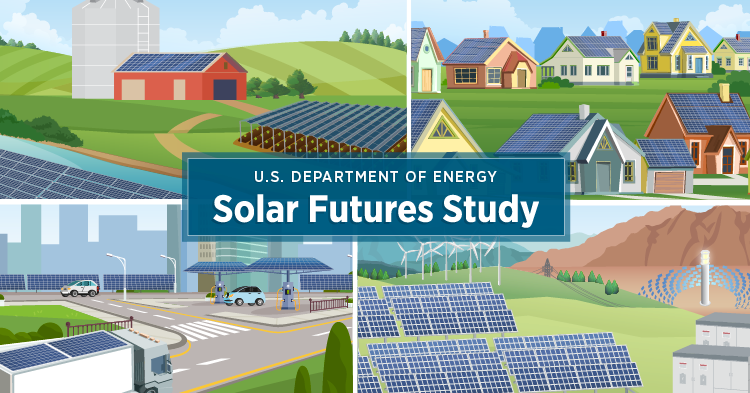United States – The Solar Futures Study, issued by the US Department of Energy (DOE), details the substantial role solar will play in decarbonizing the nation’s electricity infrastructure.
Solar energy has the ability to provide 40% of the nation’s electricity by 2035, promote deep system decarbonization, and employ up to 1.5 million people—all without rising electricity rates, according to the report. The conclusions of the study advocate for a broad and fair deployment of clean energy sources, highlighting the Biden Administration’s efforts to address the climate problem and expand access to renewable energy across the country.
In 2020, the United States installed a record quantity of solar—15 gigawatts (GWac)—totaling 76 GW, or 3% of the current power supply. According to the Solar Futures Study, the United States will need to treble its annual solar capacity increases by 2035 and provide 1,000 GW of power to a renewable-dominant grid. Solar energy could produce 1,600 GW on a zero-carbon system by 2050, delivering enough electricity to power all of the country’s residential and commercial facilities. Increased electrification in the transportation, building, and industrial sectors might result in as much as 3,000 GW of solar by 2050 if the entire energy system is decarbonized.
Findings of the study
The paper lays out a roadmap for attaining this goal, which calls for aggressive decarbonization policies, as well as widespread deployment of renewable energy sources, large-scale electrification, and grid upgrading. The following are some of the study’s significant findings:
- A clean grid requires massive, equitable deployment of diverse, sustainable energy sources — The U.S. must install an average of 30 GW of solar capacity per year between now and 2025 and 60 GW per year from 2025-2030. The study’s modeling further shows the remainder of a carbon-free grid largely supplied by wind (36%), nuclear (11%-13%), hydroelectric (5%-6%) and biopower/geothermal (1%).
- A decarbonized power sector will create millions of cross-sector jobs – The study modeling shows that solar will employ 500,000 to 1.5 million people across the country by 2035. And overall, the clean energy transition will generate around 3 million jobs across technologies.
- New tools that increase grid flexibility, like storage and advanced inverters, as well as transmission expansion, will help to move solar energy to all pockets of America – Wind and solar combined will provide 75% of electricity by 2035 and 90% by 2050, transforming the electricity system. The deployment of storage enables more flexibility and resilience, growing from 30 GW to nearly 400 GW in 2035 and 1,700 GW in 2050. Advanced tools like grid-forming inverters, forecasting, and microgrids will play a role in maintaining the reliability and performance a renewable-dominant grid.
- A renewable-based grid will create significant health and cost savings – Reduced carbon emissions and improved air quality result in savings of $1.1 trillion to $1.7 trillion, far outweighing the additional costs incurred from transitioning to clean energy. The projected price of electricity for consumers does not rise by 2035, because the costs are fully offset by savings from technological improvements.
- Supportive decarbonization policies and advanced technologies are needed to further reduce the cost of solar energy —Without some combination of limits on carbon emissions and mechanisms to incentivize clean energy, the U.S. cannot fully decarbonize the grid—models show that grid emissions fall only 60% without policy. Continued technological advances that lower the cost of solar energy are also necessary to enable widespread solar deployment.




